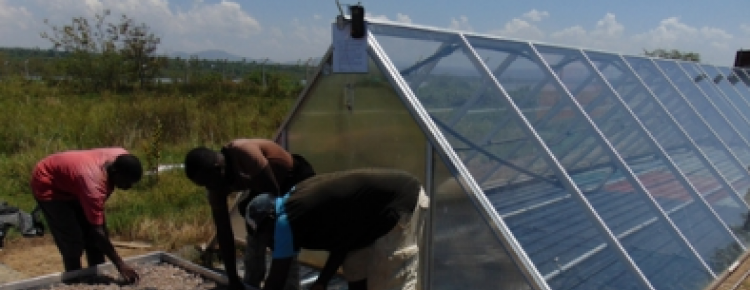
Table of Contents
Introduction
In view of the increase in the world population and therefore our food needs, the conservation of agricultural products and the reduction of post-harvest losses are essential for food security. Food drying has been practiced for centuries, but traditional methods such as air drying or other unimproved processes must now be replaced by modern solar drying techniques in order to meet market standards. Increasingly competitive world. It is thus possible to improve not only the quality of the products but also the incomes of the farmers.
Technologies
It is possible to prevent spoilage of perishable products such as fruits, vegetables, tubers or even meat or fish by using the energy of the sun. In countries that do not have industrial conservation technologies, simple solutions like sun drying hold great promise.
Solar drying involves accumulating the sun's energy inside a heat collecting device and then creating a flow of hot air by natural or forced convection. When it passes over the food, the hot, dry air removes the moisture which is dissipated into the atmosphere through a chimney installed at the other end. The sophistication levels of solar drying devices vary depending on the criteria of the end product. Traditional solar dryer use the natural convection of hot air, while innovative approaches feature a photovoltaic-powered fan that artificially moves the air inside the dryer to increase its efficiency. Unlike conventional sun drying, solar drying usually takes place in an enclosed area in order to protect the products against external impurities. The different types of solar dryers vary in complexity: direct drying, indirect drying, mixed drying, and hybrid drying are the main solutions available depending on the needs.
Solar dryer box
The box solar dryer consists of a box covered with a glass cover, which is tilted so as to maximize the penetration of solar rays. The inner walls of the box are covered with black aluminum foil to absorb the rays entering through the transparent cover. The products to be dried are spread out on three stainless steel mesh trays placed inside the box. A rectangular opening located at the bottom of the front panel serves as an air inlet. The latter enters the box by convection, dries the products and exits through a galvanized sheet chimney, carrying away the humidity. Due to the small capacity of the box, drying is relatively slow, resulting in discoloration of the products.
Solar cabinet dryer
A little more complex than the box system, the solar cabinet dryer is also more expensive. It is made up of two parts: a sensor that uses solar radiation to heat the incoming ambient air and a drying chamber in which the food to be dried is spread out on trays in several layers. Composed of glass wool for insulation and aluminum and galvanized sheet for heat conduction, the dryer operates by indirect heating, which is recommended for drying herbal products which are often sensitive to light. direct sunlight. Unlike the solar box, the cabinet dryer is recommended for community use and for small income-generating industries.
Hybrid solar-biomass cabinet dryer
The biomass-solar hybrid version includes a biomass stove installed next to the collector of the cabinet solar dryer. Using an additional fuel like biomass helps improve the drying capacity of the solar cabinet by increasing drying temperatures, which is recommended for meat and fish products.
Solar tunnel dryer
Unlike the aforementioned technologies, which only use natural convection to circulate air, the solar tunnel dryer includes a small fan powered by photovoltaic energy that forces air through the solar collector and drying chambers. Arranged in the form of a tunnel, the drying boxes and solar collectors use solar energy to heat the products placed on the trays, while the air sent into the tunnel wicks away moisture, even when conditions are unfavorable. These dryers are recommended for large scale drying for commercial purposes.
Actors and innovations
Various innovators have shown the full potential of renewable energies for drying. Innovations and creative approaches range from solar PV systems to models powered by biogas and facilitate access to energy for the poorest in rural areas who do not have electricity. In countries of the South where solar radiation is generally high and products derived from agriculture (which cannot be sold on the market) available in abundance, solar and biomass are often the only possible sources of energy. The use of renewable resources reduces the costs of food preservation, which helps to limit post-harvest losses and improve income.
Solar bubble dryer
The solar bubble dryer is another innovation that offers safe and efficient drying conditions based on solar energy. This technology uses a plastic tube 15 to 26 meters long in which the rice is spread. Transparent, the upper part of the tube allows the sun's rays to penetrate, which raises the temperature inside and dries the product. The heat is distributed evenly by solar-powered fans that circulate the air to remove moisture. To optimize drying, the rice is regularly turned with a roller. The bubble dryer is currently undergoing energy optimization and is being tested in various countries

